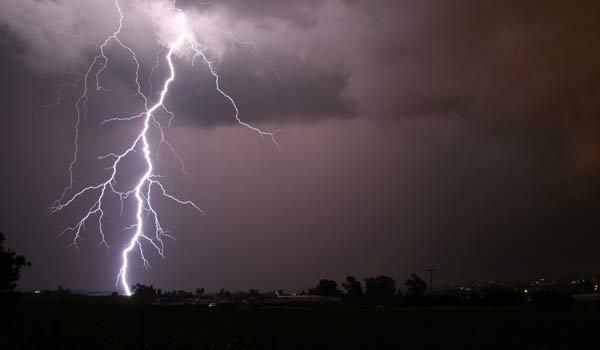Why Are Lightning Deaths Declining?

An 11-year-old Florida boy died yesterday (Oct. 7) after being struck by a bolt of lightning on his way to football practice on Wednesday (Oct. 4). His manner of death is perhaps all the more tragic for how unusual it's becoming in America.
Jesse Watlington, of Fort Myers, is the fifth person to die from a lightning strike in Florida this year, and he was hit only two days after another Floridian, Falk Weltzien, 39, of St. Augustine, was knocked unconscious by a bolt while kiteboarding with his son. Weltzien survived the ordeal with no major injuries, according to ABC News.
Despite the apparent surge in news reports of people being struck by lightning, deaths from lightning strikes so far in 2012 appear to be continuing a steady, decades-long slide.
As usual, Florida, America's lightning capital, is leading the nation in lightning deaths, but the current nationwide total of 28 is still on track to make 2012 one of the safest years on record and continue the downward trend of yearly lightning deaths that stretches back to at least 1940, according to National Oceanic and Atmospheric Administration (NOAA) data. [Top 10 Leading Causes of Death]
America's average number of yearly lightning deaths over the past 30 years is 54, a figured jacked up by particularly bad years like 1995, which saw 85 deaths, and 1987, which saw 88. The average over the last decade drops to 32, with 2011 experiencing the lowest number on record at 26 lightning deaths.
For comparison, lightning deaths in the 1940s averaged above 300, breaking 400 twice.
So why are lightning-related fatalities falling off? The population has been increasing, which would seem to make for more lightning targets and more fatal run-ins. Is lightning striking less frequently?
Sign up for the Live Science daily newsletter now
Get the world’s most fascinating discoveries delivered straight to your inbox.
Lightning expert Douglas Jordan says no.
"Statistically I don't think anything's really changed, lightning flash density or anything like that," Jordan, director of operations at the International Center for Lightning Research and Testing, a joint project of the University of Florida and Camp Blanding Florida Army National Guard Base, told Life's Little Mysteries. "My guess is that it probably has more to do with education than anything else. I think a lot of people are getting the word out [on lightning safety]."
Joseph Dwyer, a physicist at the Florida Institute of Technology who researches lightning, speculates that education on how to deal with lightning strikes once they've happened might also contribute to diminishing fatalities.
"Perhaps CPR is more widely taught, so more people survive being struck," he wrote in an email to Life's Little Mysteries.
Cardiac arrest is one way that lightning kills, according to NOAA.
The NOAA's lightning safety motto appears to be having some effect, so remember: "When thunder roars, go indoors!"
Follow Life's Little Mysteries on Twitter @llmysteries. We're also on Facebook & Google+.











